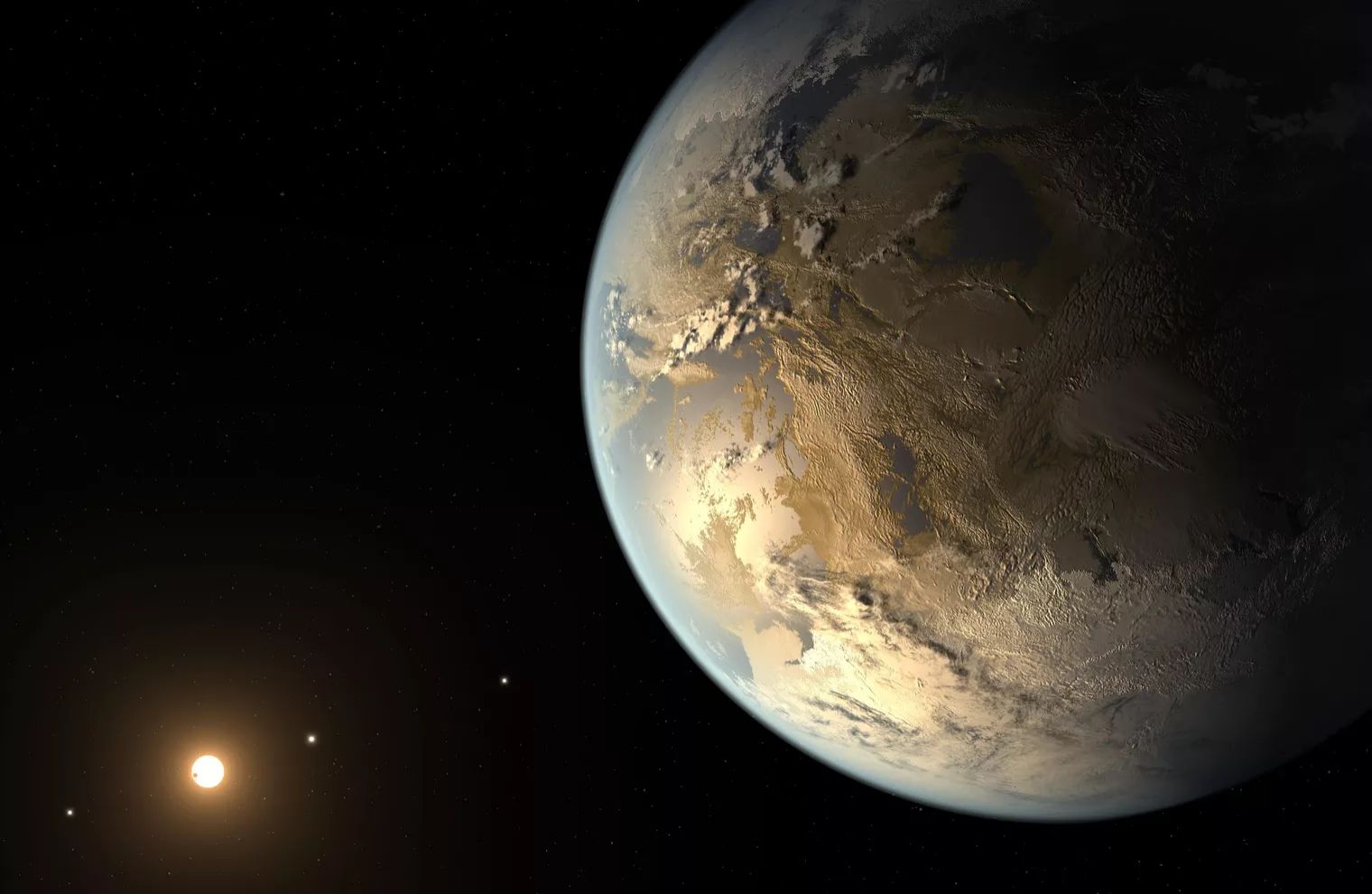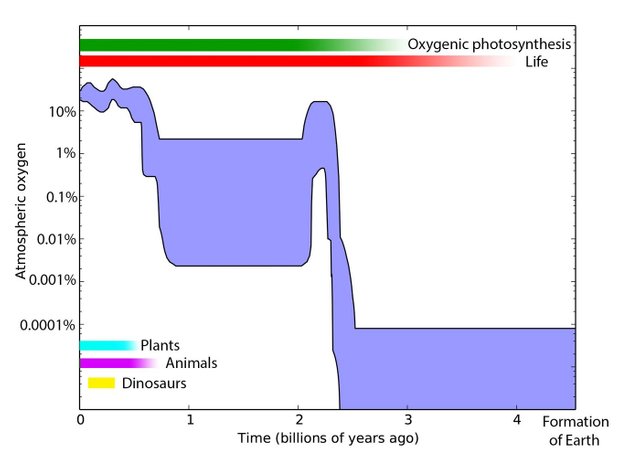Another approach to scan for faraway living beings

An imaginative rendering of a rocket exoplanet. Picture: NASA Ames/SETI Institute/JPL-Caltech
One approach to discover life outside our Solar System is to look into the environments of removed planets, searching for gases that might be delivered by living life forms. A gathering of researchers supposes we should search for two gases specifically: carbon dioxide and methane.
Most space experts advocate searching for oxygen as an indication of extraterrestrial life. Oxygen is plentiful in Earth's air on the grounds that there are numerous plants and different creatures that always direct out the gas. Without life on Earth, oxygen would in the end vanish.
Be that as it may, in another examination distributed in Science Advances, researchers recommend oxygen may not be the best focus since the gas didn't generally exist in extensive amounts here on Earth — notwithstanding when life was available. Billions of years prior, the Earth's climate had diverse mixes of gases, including carbon dioxide and methane, that lone existed together as a result of the simple life on Earth's surface. Carbon dioxide and methane respond with one other, making the methane in the long run vanish, unless there are a few kinds of creatures that continue drawing more methane into the environment, as indicated by the investigation.
"TO GET A LOT OF METHANE IN THE ATMOSPHERE, IT'S PRETTY HARD TO EXPLAIN WITHOUT LIFE."
Finding those two gases together on another planet isn't really a clincher, however. Methane can be created by an assortment of procedures, not simply by living life forms. In any case, the examination creators say they ascertained the potential outcomes of a climate having the two gases with no life at first glance, and the odds are truly thin. "You can make a tad of methane without life," ponder creator Joshua Krissansen-Totton, an exoplanet master at the University of Washington, reveals to The Verge. "In any case, to get a great deal of methane in the environment, it's entirely difficult to clarify without life."
Stargazers have since quite a while ago discussed what the most ideal courses are to look for life in distant universes. Some have proposed contemplating the light reflected off a planet to check whether there are includes at first glance that resemble vegetation. Others have contended that we should search for how gases change in a planet's air. Earth's carbon dioxide goes here and there during the time when plants in the Northern side of the equator vanish in the fall and afterward develop again in the spring. A comparative occasional cycle could be going on somewhere else.
Searching for oxygen has dependably been the greatest target, however. In any case, even oxygen has its issues: a few models demonstrate that heaps of oxygen can end up in an air without the nearness of life. That is the reason recently stargazers have recommended searching for both oxygen and different gases that "don't have a place" together. These are gases that would artificially respond with oxygen and influence the gas to leave. So they're a solid pointer that something — like, say, plants — is keeping the oxygen around.
Our planet is an awesome case of how this functions: oxygen shouldn't get by with all the methane in our air, and neither should it coincide with nitrogen and our vast fluid seas. Be that as it may, trees, plants, and even microscopic fish in the sea continue recharging oxygen in our climate, and without it, we wouldn't be near.

A chart demonstrated Earth's oxygen content after some time, appeared in lavender. The other hued lines demonstrate when certain kinds of life began to show up on the planet. Picture by J. Krissansen-Totton/T. Lyons
Krissansen-Totton and his group needed to know whether oxygen had dependably been the best indication of life on our planet. "In case you're an outsider searching for life on Earth, it'd be extremely clear now, in light of the fact that there's this oxygen," he says. "In any case, would you have the capacity to recognize life at prior circumstances in Earth's history?" The appropriate response: possibly not. For the main portion of the planet's history, there was essentially no oxygen noticeable all around. Also, for a large portion of the second a large portion of, the levels of the gas were extremely low. That is on account of it took around a billion years for life to begin delivering oxygen after the primary living life forms developed, and it took a large number of years after that for Earth to have an oxygen-rich environment.
"WOULD YOU BE ABLE TO DETECT LIFE AT EARLIER TIMES IN EARTH'S HISTORY?"
The scientists set up together the majority of their best gauges of what has been in Earth's climate since the planet initially shaped 4.5 billion years back. They found that in the main portion of the Earth's life, our planet still had four contradictory gases: carbon dioxide, methane, nitrogen, and water. So they propose searching for carbon dioxide and methane on different planets; the two gases are less demanding to recognize than the others. "Yet, in the event that you locate each of the four that is awesome," says Krissansen-Totton.
Sara Seager, a planetary researcher at MIT who was not associated with this investigation, says the approach could work. "It's extraordinary to see the ... face off regarding proceed with new thoughts," she says. However, it's constantly conceivable that further on, researchers may concoct different situations to clarify a blending of carbon dioxide and methane, Seager discloses to The Verge. "This is typical and solid in science, yet at times, issues are not settled for quite a while or ever," she says.
What's more, regardless of whether cosmologists found these gases on a different universe, the planet would in any case should be little and rough like Earth, and in addition the correct separation far from its star with the goal that fluid water could exist. Be that as it may, we could be getting planets like this soon. NASA's James Webb Space Telescope is propelling one year from now, and it will look for particular gases in the airs of planets. On the off chance that it finds this combo, much more effective telescopes later on could development and check whether there are more contradictory gases or fluid water seas on these universes.
"What's energizing about this is we'll have the capacity to attempt and mention these objective facts soon," Krissansen-Totton.
Source :
http://www.advances.sciencemag.org/content/4/1/eaao5747
https://theverge.com/2016/12/16/13989590/nasa-3d-video-carbon-dioxide-co2-earth-atmosphere
Thank you for your passing and continuous encouragement with my greetings. By @aherbil
This is not possible that we are alone in the Universe :) It's just matter of time.. :)
Downvoting a post can decrease pending rewards and make it less visible. Common reasons:
Submit
Yes, wherever living conditions are available, we will live in it, despite the difficult equation
Downvoting a post can decrease pending rewards and make it less visible. Common reasons:
Submit
Hi, I found some acronyms/abbreviations in this post. This is how they expand:
Downvoting a post can decrease pending rewards and make it less visible. Common reasons:
Submit